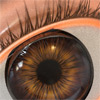macray wrote:this is Cinema glass, no AGS. I tried Displacement, but then strange things happen and phong tags are ignored.
When using polygon selection and applying 2 glass materials that only differ in the displacement/bump channel the one with the bump seems to be ignored.
still testing around.
Hello Macray,
If I understand your scene, it is one layer thick? Does the glass bottle have thickness?
If it is only one layer thick then you could setup a MXM that uses an alpha map (black and white map) to mask which areas are to have text and which do not.
I did an example with a object with thickness.
I setup a scene with a tube object. I then made it an editable polygon object.
Then I went into Bodypaint, mapped the object with a UV map using cubic mapping so I could place the text only on the outside polygon faces and placed some text on the outer polygons on the side.
I then created a MXM material. I made it glass. I added the text image from Bodypaint to the displacement channel.
I only got text on the one side of the outer polygons.




 - By Gaspare Buonsante 20200309160206
- By Gaspare Buonsante 20200309160206